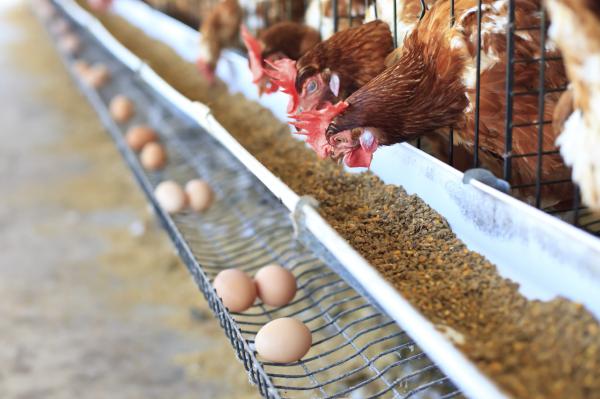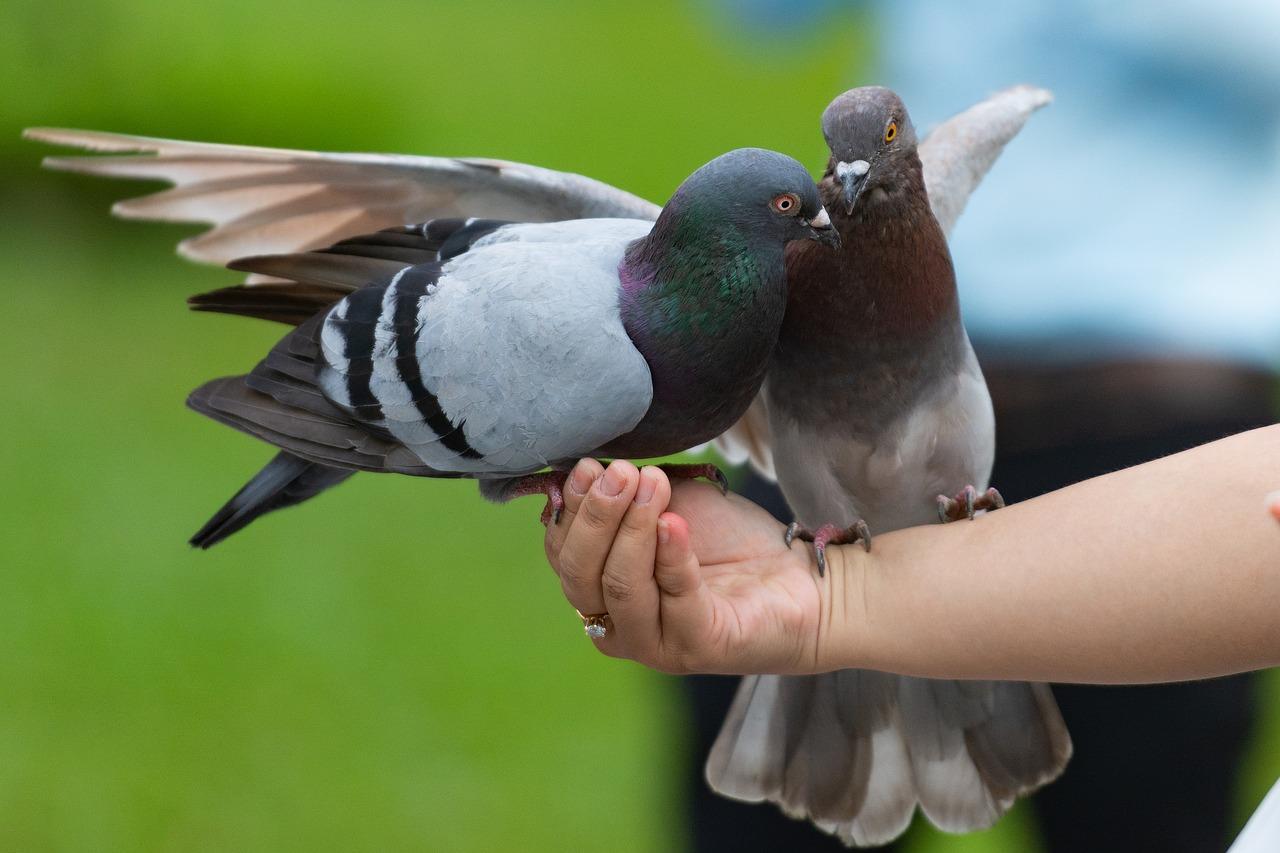Colibacillosis in Birds - Symptoms, Diagnosis and Treatment


Avian colibacillosis, often shortened to colibacillosis or E. coli disease, might sound familiar, but it's far more complex than your typical E. coli. This widespread infection impacts a vast array of birds, from backyard pets to poultry farms and even wild creatures. Beyond economic losses, the disease inflicts suffering on birds, causing respiratory distress and pain. That's why understanding it is crucial.
This article by AnimalWised dives deep into avian colibacillosis, exploring its symptoms, diagnosis, treatment options, and most importantly, how to prevent it from affecting your feathered friends in the first place.
What is avian colibacillosis?
Avian colibacillosis is a prevalent infection primarily caused by certain strains of Escherichia coli (E. coli) bacteria. These specific strains, known as avian pathogenic E. coli (APEC), are different from the harmless E. coli strains commonly found in the intestines of humans and animals. APEC strains have acquired virulence factors that allow them to cause disease in birds.
Avian colibacillosis is a major cause of morbidity, mortality, and economic loss for the poultry industry worldwide. This infection can impact various poultry species, encompassing chickens, turkeys, ducks, geese, and even ostriches. Additionally, it poses a threat to pet birds, including canaries, parrots, and urban pigeons.
While it can initiate as a primary infection, colibacillosis often arises as a secondary complication following respiratory illnesses in birds.
Avian colibacillosis manifests in two forms: acute and chronic. The acute form presents with a severe, septicemic condition, characterized by elevated morbidity and mortality rates. Conversely, chronic colibacillosis tends to exhibit milder symptoms and lower mortality rates, though it still poses significant health risks to affected birds.
Understanding the specifics of avian colibacillosis is crucial for bird owners, breeders, and enthusiasts. Whether managing a large-scale poultry operation or caring for a pet bird, awareness and proactive measures are essential to mitigate the impact of this infection. Through proper hygiene practices, meticulous management, and timely veterinary intervention, we can work to safeguard the health and welfare of our birds.

Causes of avian colibacillosis
As mentioned earlier, avian colibacillosis primarily stems from specific strains of avian pathogenic Escherichia coli (APEC). Unlike harmless strains of E. coli, APEC variants possess virulence factors crucial for inducing colibacillosis in birds.
Thse APEC strains, adapted specifically for avian hosts, are equipped with virulence factors essential for causing avian colibacillosis. Not all E. coli strains are pathogenic towards birds; it's the specifically adapted APEC strains that pose a threat.
APEC strains have developed distinctive features facilitating invasion, immune evasion, and tissue damage in avian hosts. These factors include adhesins for cell adhesion, iron acquisition systems for nutrient theft, toxin production for tissue damage, and mechanisms for evading the avian immune response.
It's essential to recognize that several factors can heighten birds' susceptibility to APEC infection and the progression of disease. Factors such as age, with both young chicks and older birds proving more vulnerable, along with stress, which compromises the immune system, and concurrent infections that damage tissues can exacerbate the spread of the disease. Additionally, certain management practices, such as inadequate hygiene and overcrowding, can further increase birds' vulnerability to these infections.

Transmission of avian colibacillosis
The transmission of avian colibacillosis can occur through various means:
Vertical transmission
APEC can be transmitted from infected parents to their offspring through the yolk sac or oviduct. Infected mothers may contaminate the eggshell, allowing E. coli to enter the interior, or transmission can occur during hatching.
Horizontal transmission
This mode of transmission involves the spread of APEC between birds that are not parent and offspring. It can happen through:
- Direct contact: Birds can become infected through contact with contaminated feces, respiratory secretions, or infected carcasses.
- Aerosols: Birds may inhale airborne bacteria from contaminated environments, leading to infection.
Understanding the various transmission routes is essential for implementing effective control measures to prevent the spread of avian colibacillosis within bird populations.
Did you know that there are also some bird diseases that can infect humans? Learn more about it in our other article.

Symptoms of avian colibacillosis
Symptoms can develop rapidly or progress over time. Furthermore, the severity of symptoms can vary widely, with some birds showing mild signs and others becoming critically ill. The most common include:
- Respiratory: coughing, sneezing, gasping, labored breathing.
- Septicemic: lethargy, loss of appetite, depression, fever.
- Pericarditis: difficulty breathing, heart murmur.
- Yolk sac infection: increased mortality in young chicks, unhatched chicks with lesions.
- Arthritis: lameness, swelling of joints.
- Localized: facial swelling (swollen head syndrome), joint swelling, lameness, swollen eyelids.
- Reproductive: decreased egg production, poor egg quality, infertility.
It is important to note that the after mentioned clinical signs are based on several factors, such as:
- The specific strain of E. coli and its pathogenicity.
- The location of the infection within the bird's body.
- The immune status of the infected birds.
It's important to note that these symptoms are not specific to avian colibacillosis and can occur with other diseases. A veterinarian should always be consulted for diagnosis and treatment.

Diagnosis of avian colibacillosis
Diagnosing avian colibacillosis involves a multi-step approach, as the symptoms can mimic other diseases.
The vet will first assess the bird's clinical signs, including respiratory distress, lethargy, diarrhea, and swelling. The vert should also gather information about the flock's health, management practices, and vaccination history is also crucial.
Moving on to laboratory tests, bacteriological examination is conducted. Samples from affected tissues, air sacs, or blood are collected for bacterial culture and identification. This confirms the presence of E. coli and determines its specific strain.
Subsequently, antimicrobial susceptibility testing is performed to evaluate the E. coli's resistance to different antibiotics, guiding treatment choices.
In addition, depending on the case, serological tests or PCR may be used for further confirmation or strain differentiation.
In severe cases or diseased birds, a post-mortem examination can reveal characteristic lesions in organs like the lungs, air sacs, liver, and heart, supporting the diagnosis.
However, diagnosing avian colibacillosis comes with its challenges. For instance, E. coli is commonly found in birds' intestines, so differentiating pathogenic (APEC) from harmless strains is crucial.
Prompt diagnosis and treatment are essential for improving the bird's chances of survival, especially in cases of septicemia. Furthermore, early intervention can also help prevent the spread of the disease within the flock.
You might be interested in this other article, where we explain how the respiratory system of birds works.

Prevention of avian colibacillosis
Avian colibacillosis poses a significant threat to poultry, but the following preventive measures can effectively mitigate its impact:
- Sanitation: implement stringent hygiene practices to eliminate potential APEC reservoirs. This includes regular cleaning and disinfection of housing, equipment, and feed/water sources. Additionally, controlling rodents and insects, known carriers of APEC, is essential.
- Biosecurity: enforce strict biosecurity measures such as quarantining new birds and limiting visitor access to poultry houses. These actions help prevent the introduction of pathogens into the flock.
- Vaccination: while no single vaccine offers complete protection against all APEC strains, targeted vaccination with specific, locally relevant strains can provide valuable defense.
- Dietary management: provide balanced nutrition to bolster birds' immune systems and resistance to infection. A well-rounded diet supports overall health and resilience.
- Stress reduction: minimize stressors by ensuring proper stocking density, ventilation, and minimizing loud noises. Stress compromises bird health and makes them more susceptible to APEC.
- Ventilation: maintain optimal air quality through proper ventilation systems. This helps remove dust and ammonia, creating an inhospitable environment for APEC growth.
- Monitoring and early detection: regularly monitor flock health for signs of illness such as respiratory distress, lethargy, and loss of appetite. Prompt reporting of any suspicious signs to your veterinarian enables early intervention.
- Routine screening: consider implementing routine flock screening, particularly following past outbreaks or when high disease risk is suspected.
- Antibiotic stewardship: practice judicious use of antibiotics under veterinary guidance to prevent the development of antibiotic-resistant APEC strains. Avoid unnecessary prophylactic antibiotic use and adhere to recommended withdrawal times to ensure food safety.

Treatment of avian colibacillosis
When treating colibacillosis in birds, the first step is to determine whether E. coli is acting as a primary or secondary agent. If it's a secondary infection, addressing the primary agent is crucial for resolving the disease effectively.
The etiological treatment of colibacillosis involves conducting an antibiogram to select an appropriate antibiotic against the infecting strain. This ensures sensitivity to the prescribed antibiotic and helps prevent the development of antimicrobial resistance. Commonly used antibiotics include enrofloxacin, doxycycline, and ampicillin.
Additionally, supporting antibiotic treatment with vitamin complexes, amino acids, and probiotics is advisable. This helps restore the intestinal flora and promotes the overall recovery of the affected birds.
This article is purely informative. AnimalWised does not have the authority to prescribe any veterinary treatment or create a diagnosis. We invite you to take your pet to the veterinarian if they are suffering from any condition or pain.
If you want to read similar articles to Colibacillosis in Birds - Symptoms, Diagnosis and Treatment, we recommend you visit our Infectious diseases category.
- Spanish Association of Poultry Science. (2010). Colibacillosis in poultry farming: current situation.
- Roca, J. Current status of colibacillosis in poultry farming and its modern treatments. Veterinary overview; 413-420











